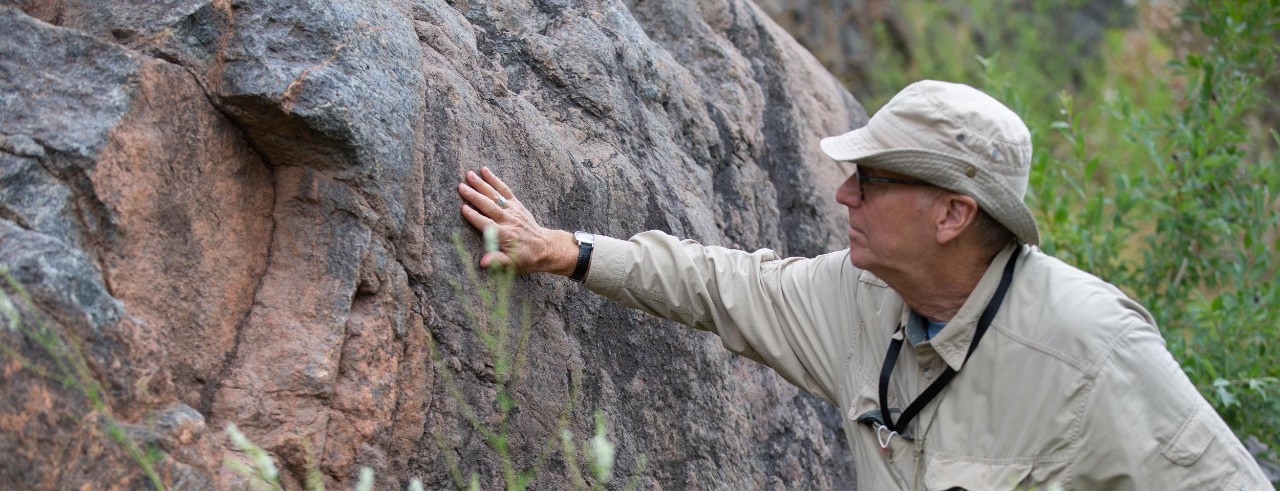
WLW: UC geologist explains local risks from earthquakes
More than 19,000 killed in deadly Turkey earthquake
WLW turned to a University of Cincinnati geologist to explain the earthquake risks in the Midwest after a natural disaster in Turkey and Syria killed more than 19,000 people.
A magnitude 7.8 earthquake on Monday destroyed hundreds of thousands of structures in Turkey and Syria in what the Turkish president described as “the disaster of the century.”

UC associate professor Craig Dietsch leads a geology field trip to Thunder Bay, Ontario. Photo/Andrew Higley/UC Marketing + Brand
UC associate professor Craig Dietsch, head of UC's Department of Geosciences, told 700-WLW's Eddie & Rocky Show that earthquakes occur along known fault lines with no warning.
“Predicting earthquakes is very tricky,” Dietsch told co-hosts Rocky Boiman and Eddie Fingers.
“The fault lines in Turkey are very similar to the San Andreas,” Dietsch said. “They occur where these giant pieces of the Earth's crust are moving around and grinding past one another.”
Dietsch said the largest earthquake recorded in the United States was an 9.2 in southern Alaska in 1964, which generated a tsunami that killed people as far away as California.
“Any earthquake above 7 is a gigantic earthquake,” Dietsch said.
Dietsch leads regular geosciences field trips so students can explore the unique geology of places such as Thunder Bay, Ontario. Read: School of Rocks.
Dietsch said some new buildings in earthquake-prone areas have shock absorbers to help mitigate damage from tremors.
“Everywhere on our planet is under constant stress. If rocks are weak, they tend to slide past each other and you don't get an earthquake,” Dietsch said. “But if two strong rocks are strong, pressure builds up and sooner or later that stress will be released through an earthquake.”
Dietsch said the closest fault to Cincinnati is the Reelfoot Rift in Missouri.
“We live in a pretty seismically safe zone,” Dietsch said.
Listen to the WLW interview on the Eddie and Rocky Show.
Featured image at top: UC associate professor Craig Dietsch examines a cliff face near Duluth, Minnesota, during a 2022 field trip. Photo/Andrew Higley/UC Marketing + Brand
Related Stories
News Cincinnati loved in 2025
January 2, 2026
The story of prohibition bootlegger George Remus was among WLWT's favorite segments in 2025. UC Law Professor Christopher Bryant spoke with journalist Lindsay Stone about Remus using a temporary insanity defense during a murder trial.
What to know about this year’s big tax changes
January 2, 2026
Local 12 reported that taxpayers can expect some major changes this tax season. Gary Friedhoff, adjunct instructor at the University of Cincinnati’s Carl H. Lindner College of Business, recently spoke to Local 12 about how to avoid surprises.
Study finds police officers face higher long-term health risks
January 2, 2026
J.C. Barnes, a University of Cincinnati professor, is interviewed by Spectrum News about new research showing that the physical and psychological demands of law enforcement can contribute to earlier deaths.
